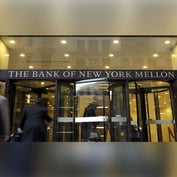What You Need to Know
- The full impact of Schwab's purchase of TD Ameritrade won't likely be felt for another 12 to 18 months.
- Increasingly, major custodial firms have been competing with their own clients by offering advice.
- Advisors have been told to diversify custodians, but will they?
Last October, Charles Schwab completed the acquisition of TD Ameritrade. The consolidation of two of the biggest firms in the industry has hinted at a seismic shift in the industry landscape. What’s next?
It’s important to look at the merger and other changes through two lenses: how it affects the industry and how advisors will be affected as they seek to control their own destiny. The custodial industry has seen an increase in consolidation, mergers and new firms entering the space. These changes, which will take years before they make their full impact, will always have the biggest effect on the advisors that use the custodian.
Over the last 30 years advisors have gravitated toward one of the big four, soon to be three, major firms: Schwab, Fidelity, TD Ameritrade and Pershing Advisor Solutions. The services of these big firms have become largely commoditized, each offering the necessary core technology, holding a wide range of standard investment assets, facilitating the advisor’s billing and doing it for an increasingly lower cost.
After selecting a custodian, the goal of an advisor is to focus on the most important brand: their own. Their business priorities are to serve their clients to the best of their ability and build the firm’s brand reputation within their community.
The Catch
Unfortunately, the big-box custodians have something else in common with each other and the RIAs they are serving. They have been building their own powerful advice brands. Slowly but surely, discount brokers have become powerful providers of advice, playing in the same sandbox as the advisors whose assets they custody.
Advertising dollars to pay for their advice model must come from somewhere, and advisors are helping to foot that bill. These big-box custodians say that providing advice was unavoidable — it is what they must do to compete in the marketplace and enhance shareholder value.
This concept has been discussed before, but recently, advisors have been pushing back on custodians, particularly in light of the disruption in the business. Right now, there is simply more choice in the marketplace.
Many smaller firms are different because they are not cutting the advisors’ clients off at the pass by advertising an advice model during the Super Bowl.









 May 05, 2021 at 02:20 PM
May 05, 2021 at 02:20 PM











